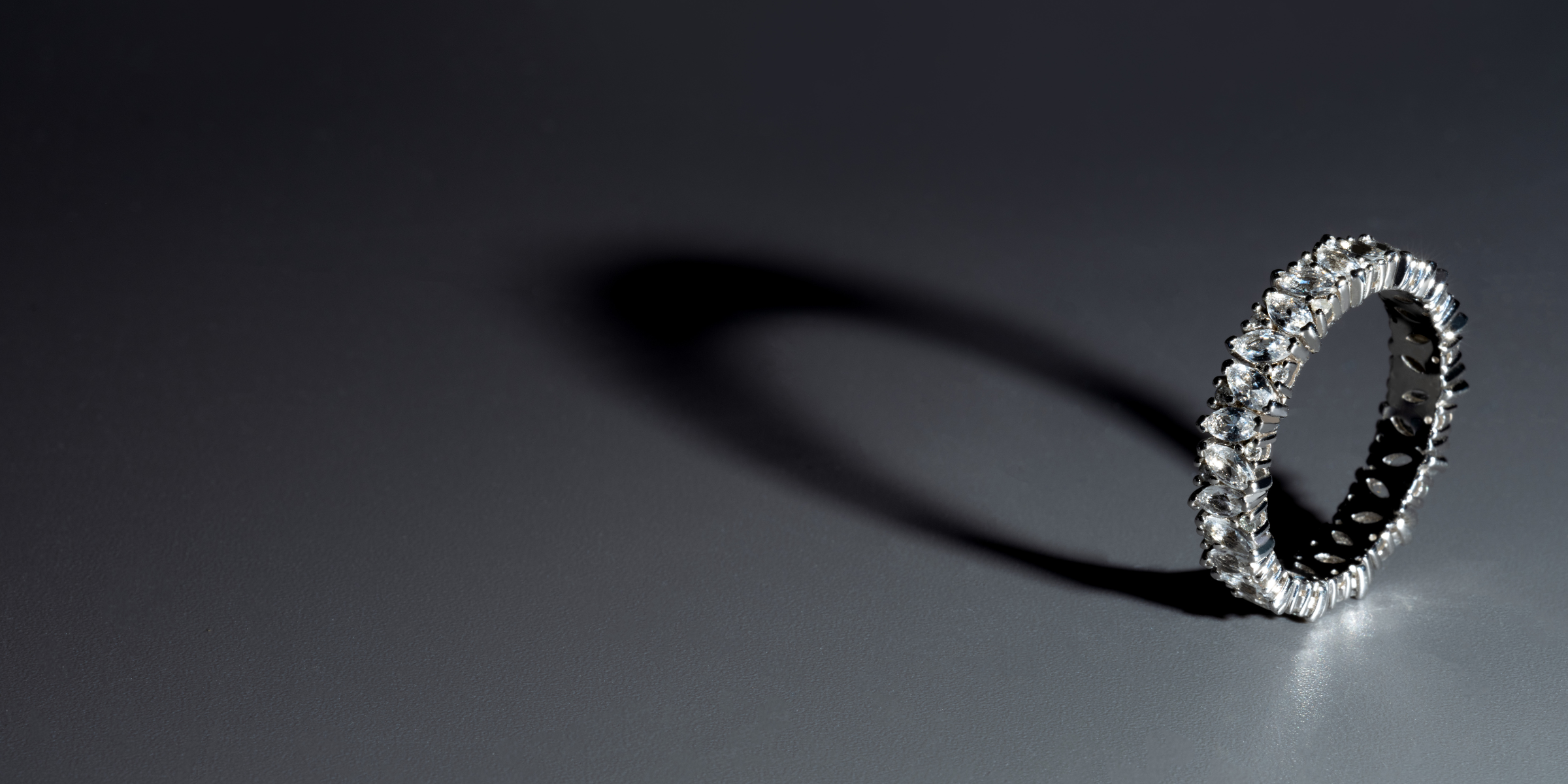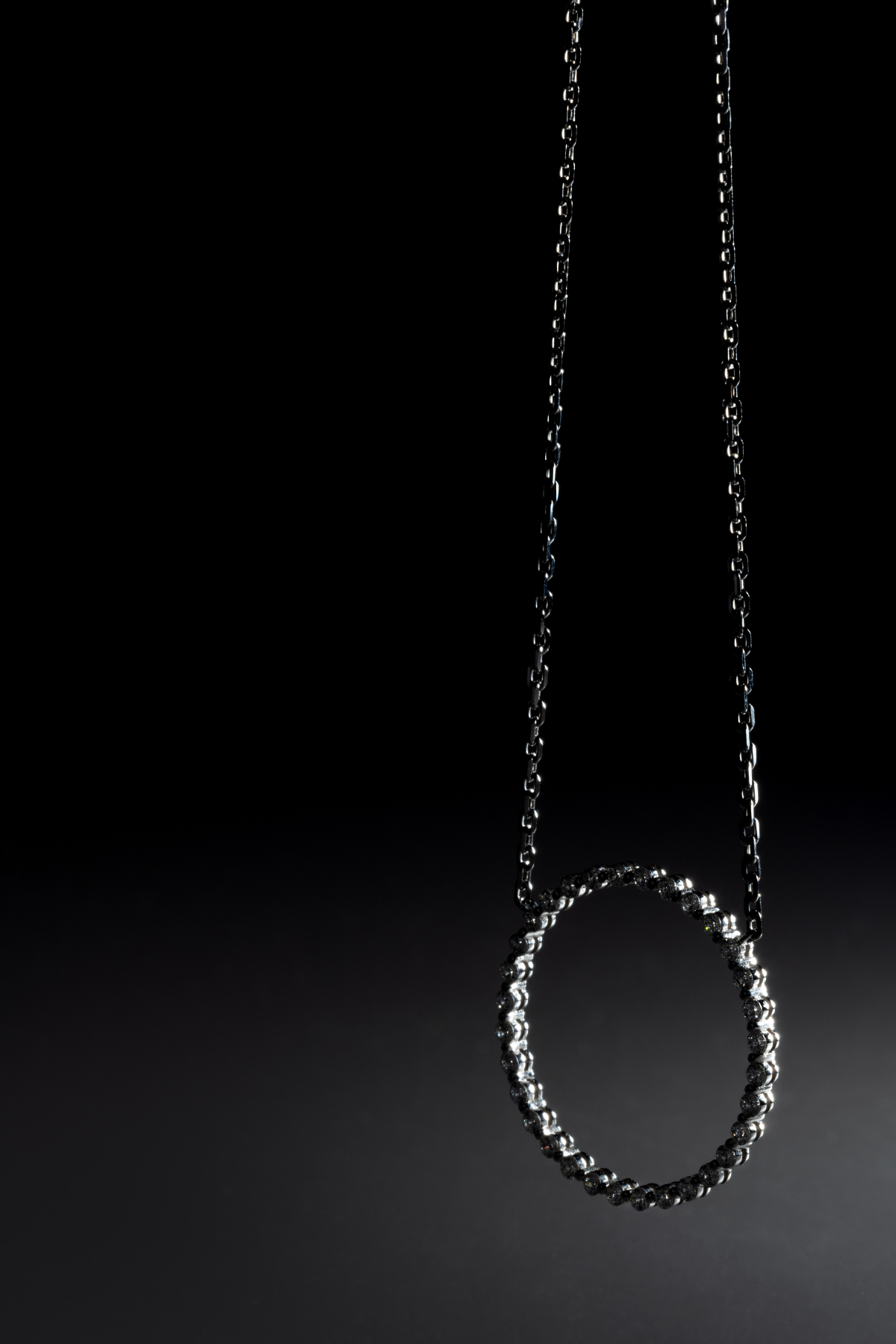How are lab grown diamonds and stones grown?

The modern age of diamond mining for mined diamonds luxury jewellery began nearly a hundred years ago

Diamonds, of course, have been mined for perceived value for much longer, and we’ll explore that deeper history below, but the contemporary use of diamonds in luxury jewellery began to resonate with people due to De Beers’ advertising campaigns.
In the 1930s, De Beers launched their campaign based on the idea that true love and commitment could only be shown if a man spent a month's salary on his wife's ring

…and not just any ring, of course, but a diamond ring…with mined diamonds. Of course, back then, mined diamonds were the only option for anyone desiring those gemstones, and for decades, the strife mining was causing in impoverished areas, such as in various African territories, went unnoticed by capitalistic Western countries in the market for expensive rings - buying markets like the US and UK.
Then, in 1947, De Beers changed the face of diamonds luxury jewellery… well, "forever," with their infamous slogan "A diamond is forever."

These two ad campaigns combined solidified the notion in consumers’ heads quite successfully – a diamond ring was the only way to show your love, and a diamond is the most precious gemstone in the world. Consequently, you’d need to pay an arm and a leg to put one on your partner’s finger.

Then, a new way forward began to blossom in the 1950s. But first, some history and science. To understand how a lab-grown diamond is created, it is important to know how diamonds are formed
A diamond formed underground can take a billion years or more to transform from its original state of carbon rock. After diamonds are found underground through exploratory mining, they must be extracted, cut, and polished to obtain the degree of gem-quality status necessary to be set in your jewellery—and only 20% of excavated diamonds are even considered potential candidates.

The earliest diamonds were found in India in the 4th century BC, although the youngest of these deposits were formed 900 million years ago
A majority of these early stones were transported along with the network of trade routes that connected India and China, commonly known as the Silk Road. 700 years later, The first example of a diamond's use in jewellery was in the form of a Hungarian queen's crown in 1074 AD. After that, the diamond became used in many crowns and royal jewels. The first documentation of diamond cutting in Europe dates back to 1407, in Paris, where there was an active guild including jewel cutters.

Now, you might recall earlier we mentioned things changed with how diamonds could be sourced by the 1950s. What was that change? Only the most major revolution to happen in fine jewellery possibly ever – not to mention a marvel of modern science!
By the 1940s, the General Electric Research Laboratory in Schenectady, New York, was hard at work on a project that would later disrupt an entire industry.

GE had become the centre of lab grown diamond research. The famed electric company had brought together researchers from chemistry, physics and industrial engineering. Their project was code-named “Project Superpressure” and everyone was sworn to secrecy. It took years of unsuccessful trials, and as time went by, the big brass at GE began to think these efforts might all be for nought.
But then, on the evening of 16 December 1954, that all changed…
Tracy Hall, one of the scientists working on the project to create what was then called "synthetic diamonds," had a breakthrough with this team. The Wikipedia entry for synthetic diamonds really sums it up well:
“[Hall’s] breakthrough was using a "belt" press, which was capable of producing pressures above 10 GPa (1,500,000 psi) and temperatures above 2,000 °C (3,630 °F).[29] The press used a pyrophyllite container in which graphite was dissolved within molten nickel, cobalt or iron. Those metals acted as a "solvent-catalyst", which both dissolved carbon and accelerated its conversion into diamond. The largest diamond he produced was 0.15 mm (0.0059 in) across; it was too small and visually imperfect for jewelry, but usable in industrial abrasives. Hall's co-workers were able to replicate his work, and the discovery was published in the major journal Nature.[30][31] He was the first person to grow a synthetic diamond with a reproducible, verifiable and well-documented process.”
Not to digress too much here, but on a side note, calling lab grown diamonds “synthetic diamonds” is pretty out of fashion at this point, which many believe is for the best. Synthetic, after all, has a connotation of “fake,” and lab grown diamonds are the very same diamonds as mined!

Of course, over the years since Hall’s revelation, the tech and ability to create diamonds has grown exponentially
To create a cultured diamond, these same high heat and pressure conditions that occur naturally underground must be replicated. Most often, one of two methods is utilised to mimic these conditions, either HPHT (High Pressure High Temperature) or CVD (Chemical Vapour Deposition - this is the newer method of the two). In the CVD method, a diamond seed, extracted from the purest diamond in a previous batch, is placed inside a growth chamber. The chamber is then filled with carbon-rich gases, and the seed is exposed to incredible amounts of heat and constant pressure. In the HPHT method, created diamonds are produced from carbon material in apparatuses that mimic the high pressure, high temperature conditions of natural diamond formation in the earth.

Over the course of 50 years, lab technology has evolved to the point where 1 carat of gem-quality cultured diamond can be engineered in a couple of weeks’ time. And we’ll cover this later, but now there are even ways evolving of lab growing diamonds for sustainable luxury jewellery that are totally carbon negative!

With cultured diamonds lab technology, the billion years-plus waiting game and successive diamond mining necessary to get mined diamonds is no longer needed
Regardless of by what method a lab-grown diamond is created, it comes out as an uncut diamond. From that point on, the process by which it gets to your jewellery is exactly the same as that of a mined diamond.
So, once the cultured diamond has been grown, it is laser cut to the desired shape, which nets losses of only 1% of diamond material versus the 8% using ordinary tools. After cutting, it is perfectly polished so that the gloss has the best possible shine.

The result is cultured diamonds (also known as lab-grown, man-made diamonds, grown diamonds, etc) which are chemically, optically, and physically the same as mined diamonds
That’s basically a fancy way of saying we have a scientific miracle on our hands!

Specifically, we’re now able to create diamonds using science that are literally the same rock as a mined diamond. Most importantly, that means mining is no longer necessary. Why bother, when mining hurts the earth, pollutes groundwater, displaces wildlife and opens up the possibility of human conflict in shady diamond trades?

Cultured diamonds are even certified and graded in the same way as mined diamonds
The same prestigious gemology laboratories are utilized to rate cultured diamonds, where scores are assigned in the 4c's of diamond quality (cut, colour, clarity, and carat weight). As cultured diamonds technology has evolved, we are now at the point where most cultured diamonds are rated better than mined diamonds. Most cultured diamonds are rated Type IIa status, whereas only 2% of mined diamonds reach this coveted benchmark.

Besides the convenience of sourcing, the benefits of cultured diamonds are numerous when stacked against the environmental and human costs of diamond mining
Even when considering the price, cultured diamonds win out, as the jewellery created from cultured diamonds is not subject to the price gouging seen in the mined diamond market. Fine cultured diamonds jewellery, which again, is the same quality or better as mined, are routinely 30 to 40% priced fairer than mined diamond jewellery.

Cultured diamonds are more ethical, as their origin is totally transparent
With mined diamonds, there’s no way to be 100% sure that your gemstone is not a conflict or “blood diamond.” This is the case even taking into consideration the controversial and oft-criticized Kimberley Process, which is the mined diamonds industry-standard of verifying conflict status. Cultured diamonds give the buyer more peace of mind, since the exact origin of the diamond is known for certain—namely, that it’s always 100% conflict-free.
Diamond mining takes a strong toll on the environment
The mined-diamond industry has done everything possible to reduce damage to ecosystems, but the eco-cost of exploratory digging, the resultant groundwater pollution, carbon emissions from mining gear, and disturbing wildlife—it’s all still a big concern. Though the diamond mining industry has taken pains to be more environmentally friendly, it’s tough to beat cultured diamonds at this game, as they require no mining at all to produce, as well as no human conflict.

Lastly, let’s end this on a fun note – of the science-fun-fact variety!
No matter what method is employed out there currently to grow diamonds, it’s more sustainable than diamond mining. But increasingly, the case for lab growing diamonds is getting even stronger. Labs across the world are growing diamonds with carbon-neutral status, which means no damage has been done to Earth at all!

But check this out – one of the emerging ways on the horizon to make diamonds is to literally pull them from the sky. You read that right! This method involves using new tech to capture excess carbon from the atmosphere and convert it into diamonds. That means new methods such as these aren’t even just content to be carbon neutral – because with this “It’s raining diamonds” process, we’re potentially talking carbon NEGATIVE. Meaning, that this could actually be a way to REDUCE pollution, and come out with gem-quality diamonds!

So, all told, it’s with great excitement that fine cultured diamonds jewellery brands are popping up everywhere, making notable and newsworthy efforts to change the way diamonds are sourced for our jewellery.

Just remember, if you’re in the market for anything fine jewellery, whether it’s for everyday wear, for a fancy evening out, or even for an engagement ring, you now have a choice in what method of diamond sourcing you want to support.




